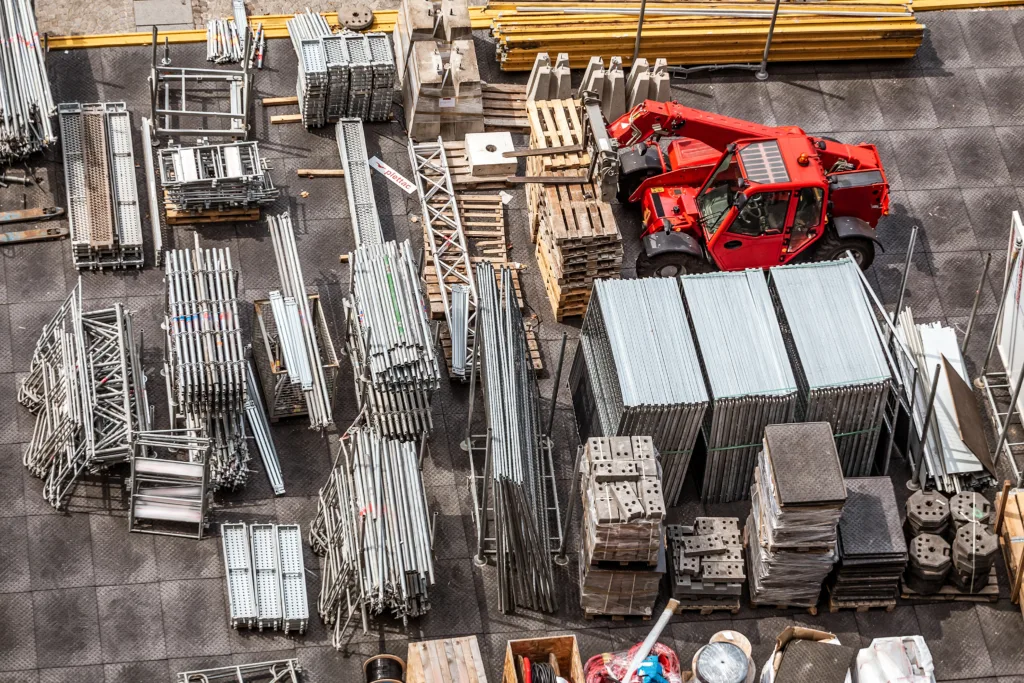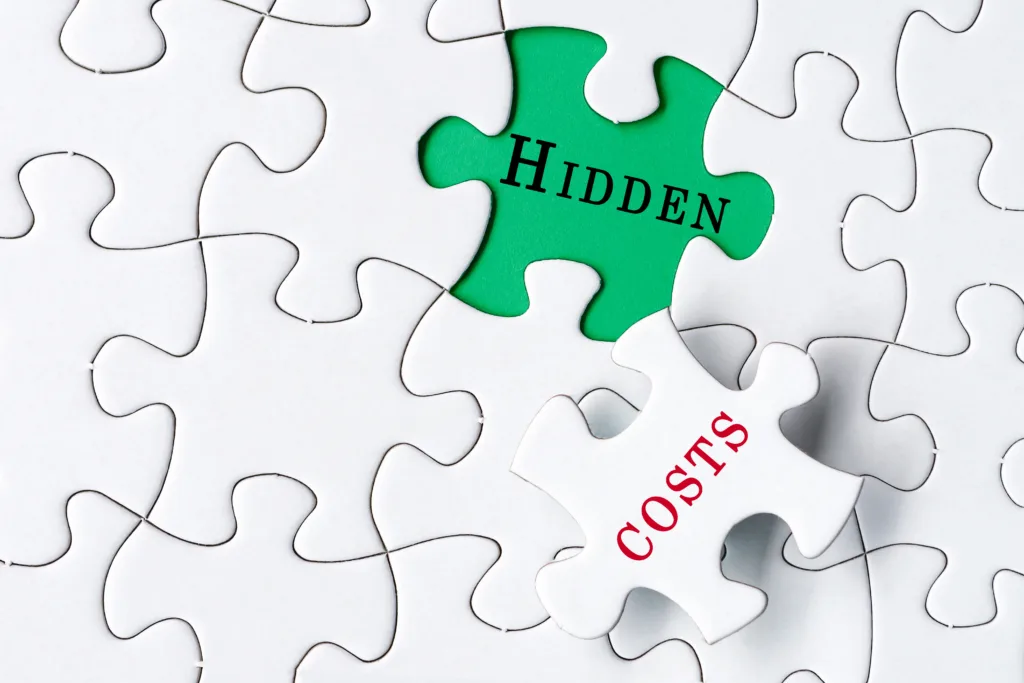The world of construction is complex and intricate, filled with considerations that stretch far beyond mere bricks and mortar. The diverse costs involved are among the most crucial and often overlooked aspects of a construction project. Understanding these costs is a matter of budgeting and a fundamental cornerstone of effective project management.
When we think of construction project costs, our immediate thoughts revolve around material costs, labor costs, or machinery costs. However, this barely scratches the surface. Delving deeper into the different types of construction costs reveals a multifaceted financial landscape, where various expenditures intertwine to shape the overall project’s economic footprint.
Whether you’re a seasoned contractor, an ambitious developer, or someone curious about the construction industry, recognizing and distinguishing between the most common construction costs is vital. It’s not just about the money; it’s about making informed decisions that can save time, resources and ultimately contribute to the successful completion of the project.
In this article, we will unravel the complexity of construction costs by breaking them down into five main types: Direct Costs, Indirect Costs, Soft Costs, Unforeseen Costs, and Opportunity Costs. Each category will be explored in detail, providing insights into their nature, relevance, and impact on construction projects.
Join us as we embark on a journey through the intricate web of financial considerations that lie at the heart of every construction project. With careful planning and a clear understanding of these costs, you can navigate your construction projects more confidently and efficiently.
Table of Contents
1. Direct Costs
In the bustling world of construction, the term “direct costs” is more than just a buzzword. It represents the very backbone of your project’s budget, encompassing those expenses directly tied to the physical development of the structure. Let’s unravel what direct costs entail and how they leave an indelible mark on the financial landscape of a construction project.

What Are Direct Costs?
Direct costs refer to the expenditures that are directly linked to the creation of the building itself. These are the tangible expenses that you can see, touch, and quantify. Some common examples include:
- Material costs: Everything from concrete to cables, steel to paint; the materials used in construction are a significant part of direct costs.
- Labor costs: The wages paid to the workers, engineers, and other skilled professionals involved in the construction process.
- Equipment: The cost of renting or purchasing heavy machinery and other essential building tools.
Impact on Overall Construction Project Costs
Direct costs form the lion’s share of the construction budget. A misunderstanding or miscalculation in this area can lead to budget overflows, delays, and even project failure. Understanding and managing direct costs is, therefore, paramount to the successful completion of a project.
Strategies to Manage and Predict Direct Costs
Managing direct costs is not simply a matter of calculating numbers. It’s a complex task that requires foresight, planning, and meticulous attention to detail. Here are some strategies to help you navigate this critical aspect of construction:
- Accurate Estimation: Utilize modern software tools to provide a realistic estimate of the materials, labor, and equipment costs.
- Bulk Purchasing: Consider buying materials in bulk to leverage discounts and control costs.
- Monitoring and Control: Regularly monitor expenses against the budget to ensure the project stays on track.
Direct costs are the beating heart of construction costs, and understanding them is central to the financial management of any construction project. They’re not just numbers on a spreadsheet but tangible aspects that shape the reality of your project. Accurate cost estimation alone, wise purchasing decisions, and rigorous monitoring can turn the daunting task of managing direct costs into a navigable and successful endeavor.
By getting to grips with direct construction costs, you take a vital step toward delivering your project on time and within budget, setting the foundation for the remaining types of expenses we will explore in subsequent sections.
2. Indirect Costs
While direct costs lay the tangible groundwork of a construction project, the picture is only complete with a keen understanding of indirect costs. Though less visible, these costs are equally vital in shaping the financial landscape of a project. Let’s dive into the nuanced world of indirect costs and uncover what sets them apart from their more direct counterparts.

What Are Indirect Costs?
Indirect costs in construction are the expenses that support the project but aren’t directly tied to the physical building process. These can be somewhat elusive, blending into the backdrop of the overall project cost, yet their impact is undeniable. Examples of indirect costs include:
- Administrative Costs: The salaries of office staff, insurance, legal fees, and other general overhead.
- Facility Costs: Temporary facilities, site utilities, and maintenance expenses.
- Equipment Depreciation: The decrease in the value of machinery and tools used throughout the project.
- Permits and Licenses: Costs associated with obtaining necessary legal permissions to proceed with construction.
Differences Between Direct and Indirect Costs
While direct costs are easily traceable to specific tasks within the full project scope, indirect costs are more diffuse. Unlike direct costs, which pertain to the physical building, indirect costs are concerned with the overarching support and facilitation of the project.
Importance of Indirect Costs in Project Management
Although indirect costs may seem peripheral, neglecting them can lead to unforeseen financial strain. Understanding and planning for these costs is essential in:
- Budgeting: Accurate budgeting that accounts for both direct and indirect costs ensures a more realistic financial plan.
- Project Efficiency: Allocating resources to manage indirect costs improves overall project coordination and efficiency.
Indirect costs might not carry the visible weight of materials or labor, but their influence on construction project costs is profound. They weave through the very fabric of project management, often undetected yet profoundly impacting the bottom line.
Grasping the subtleties of indirect construction costs requires a discerning eye and strategic thinking. It’s about seeing beyond the bricks and mortar and recognizing the intricate web of supportive functions that allow a project to thrive.
In the following sections, we’ll continue to unravel the complexities of construction costs by exploring other essential categories, further empowering you to manage your projects with foresight and confidence.
3. Soft Costs
As we delve further into the multi-layered world of construction project costs, we encounter the somewhat enigmatic realm of soft costs. Unlike tangible direct costs or supportive indirect costs, soft costs encompass those expenses that are often intangible but critical to the project’s planning and execution. Let’s explore the world of soft costs and their role in successfully managing a construction project.

What Are Soft Costs?
As the name suggests, soft costs are less concrete than the other costs we’ve discussed. These costs are generally related to non-construction activities but are no less vital to the total project cost. Examples of soft costs include:
- Design and Architectural Fees: Expenses associated with the project’s planning, design, and architectural aspects.
- Legal and Permitting Fees: The costs of ensuring that the project complies with all relevant laws and regulations.
- Inspections and Surveys: Fees for necessary inspections, surveys, and environmental assessments.
- Financing Costs: Interest on loans, banking fees, and other financial considerations arising during construction.
How Soft Costs Can Affect a Project’s Budget and Timeline
Soft costs, though seemingly indirect, can have a significant impact on a project’s budget and timeline:
- Budget Impact: Soft costs can amount to a substantial portion of the budget, sometimes rivaling direct costs. Proper estimation is crucial to avoid unexpected overruns.
- Timeline Impact: Delays in obtaining permits, completing designs, or legal hurdles can slow the project and increase costs.
Strategies to Estimate and Control Soft Costs
Managing soft costs effectively is a nuanced task that requires careful planning:
- Early Planning: Outline soft costs at the beginning of the project to ensure they are appropriately budgeted.
- Hire Experienced Professionals: Engage with seasoned architects, legal professionals, and financial experts to navigate these complexities.
- Monitor Progress: Regularly review soft costs throughout the project to detect potential issues early.
Soft costs may lack the tangible presence of materials or labor, but their impact on construction costs is substantial and subtle. They represent the unseen but necessary underpinnings that help shape the project from concept to completion.
Understanding soft construction costs is about more than just recognizing expenses. It’s about appreciating the art and science of constructing a project from the ground up, considering every intricate detail contributing to its success.
As we continue to explore the myriad costs involved in construction, soft costs stand as a testament to the complexity and finesse required to orchestrate a project with skill and precision.
4. Unforeseen Costs
In the well-calculated world of construction, surprises are often unwelcome, especially when it comes to costs. Unforeseen costs are the wild cards, the unexpected expenses that can suddenly emerge and disrupt even the most meticulously planned project. Let’s navigate the unpredictable terrain of unforeseen costs and learn how to mitigate these financial uncertainties.

What Are Unforeseen Costs?
Unforeseen costs are those unexpected expenses that arise during the construction process, often without warning. These costs can be perplexing and frustrating, as they are usually beyond the initial estimations. Examples include:
- Site Conditions: Discovering unstable soil, hidden rock formations, or contaminated land that requires additional work.
- Weather-Related Damages: Unanticipated weather events causing damage or delays.
- Changes in Regulations: Sudden changes in laws or regulations leading to other compliance measures.
- Design Changes: Last-minute alterations or corrections to design that lead to additional expenses.
Risks Associated with Unforeseen Costs
The sudden appearance of unforeseen costs can introduce severe risks to the project:
- Budget Overflows: These costs can quickly inflate the budget, leading to financial strain.
- Project Delays: Unplanned issues often lead to delays, affecting the entire project timeline.
- Quality Compromises: Quality may be sacrificed in other areas to accommodate unexpected costs.
Techniques to Mitigate These Risks and Unexpected Expenses
While unforeseen costs can’t be eliminated entirely, there are strategies to reduce their impact:
- Contingency Planning: Set aside a contingency fund as part of the budget to cushion against unexpected expenses.
- Thorough Site Investigation: Conduct comprehensive site investigations to detect potential hidden problems.
- Regular Communication: Foster open communication with the team to quickly address any unforeseen changes or needs.
- Adaptive Management: Be flexible and ready to adapt to changes without compromising the project’s integrity.
Unforeseen costs represent the unpredictable nature of the construction process. They remind us that even the most carefully planned project can encounter surprises. These unexpected elements of the most common construction costs are not anomalies but inherent challenges that demand awareness, preparation, and adaptability.
Embracing unforeseen costs as part of the complex construction puzzle allows for a more resilient approach. By anticipating the unexpected and responding with agility, these costs become less of a stumbling block and more of an opportunity to demonstrate resourcefulness and skill.
As we explore construction costs, the lesson from unforeseen costs resonates: construction is as much about adaptability and problem-solving as it is about concrete, steel, and labor.
5. Opportunity Costs
As we conclude our exploration of the various types of construction costs, we must venture into an often overlooked yet profoundly impactful realm: opportunity costs. Unlike the more tangible direct costs or the unexpected, unforeseen costs, opportunity costs dwell in the world of ‘what could have been.’ Let’s decipher this elusive concept and its significant role in construction project management.

What Are Opportunity Costs?
Opportunity costs in construction refer to the potential benefits an individual or company could have received but gave up to pursue a particular course of action. In other words, the value of the following best alternative is forfeited when a decision is made. Examples include:
- Time Allocation: Choosing one project over another may lead to missing out on potential profits from the forgone project.
- Resource Allocation: Investing in specific machinery or technology might limit the ability to invest in other potentially beneficial areas.
- Financial Decisions: Choosing a specific financing route may exclude other potentially more profitable investment opportunities.
Understanding Opportunity Costs in Construction Management
Understanding opportunity costs is crucial because every choice made in a construction project carries implicit trade-offs. Whether it’s selecting a project, choosing materials, or allocating time, the choices made shape the project’s immediate future and its long-term success.
Strategies to Consider Opportunity Costs
Evaluating opportunity costs isn’t always straightforward, but there are strategies to consider these hidden costs:
- Comprehensive Analysis: Conduct a detailed analysis to understand the potential trade-offs and benefits before making significant decisions.
- Consultation with Experts: Engage financial analysts and strategic planners to evaluate opportunity costs accurately.
- Regular Review: Continuously review decisions to ensure the chosen path aligns with the strategic goals.
Opportunity costs, though intangible, are integral to the intricate fabric of construction project costs. They echo the intricate dance of decisions that shape every project, reminding us that each choice carries weight, consequence, and potential.
Recognizing and considering opportunity costs is about embracing a holistic construction management view. It’s about seeing the paths not taken and understanding their value in the context of the project’s overarching goals.
As we wrap up our exploration of the 5 types of construction project costs, opportunity costs are a testament to the complexity and wisdom required to navigate the multifaceted construction world. These insights equip us to build structures and construct projects with vision, foresight, and strategic insight.
Conclusion
The world of construction is a symphony of details, decisions, and dynamics, where every note must be carefully composed. As we have explored, construction project costs are not merely about numbers on a spreadsheet; they are about understanding the many facets that shape a project, from the tangible to the intangible.
- Direct Costs: The building blocks defining the project’s material aspects.
- Indirect Costs: The supporting orchestration that enables the physical construction.
- Soft Costs: The subtle art of planning, design, legal compliance, and financing that adds depth to the project’s structure.
- Unforeseen Costs: The wild cards, the surprises that test our resilience, adaptability, and problem-solving skills.
- Opportunity Costs: The paths not taken, the choices that remind us that construction is as much about strategy as execution.
Navigating these various construction costs requires more than mere calculation; it demands vision, foresight, adaptability, and a deep appreciation of the complexity inherent in constructing not just buildings but dreams and communities.
In the intricate dance of construction, every cost tells a story, and every decision carves a path. Understanding these costs is not just about managing budgets; it’s about crafting a project with the wisdom to see beyond the bricks and mortar. It’s about building with purpose, passion, and the profound recognition that construction is a living tapestry woven with innovation, dedication, and skill.
As we lay down our tools and reflect on the rich landscape of construction project costs, we are reminded that the true mastery of construction lies not in the mere assembling of materials but in the artful orchestration of possibilities.
Whether you’re a seasoned builder, a new project manager, or anyone in between, may this exploration of the most common construction costs guide you in your endeavors, illuminating the path to successful, mindful, and inspired construction.
Additional Information
Resources and Tools
Understanding and managing the different types of construction projects and costs can be a complex task. Here are some valuable resources and tools that might aid you in your construction project:
- Software Solutions: Tools like Procore, Buildertrend, or CostX can assist in cost estimation, project management, and collaboration.
- Industry Publications: Magazines and journals like “Construction Business Owner” or “ENR” provide insights into the latest trends, regulations, and technologies.
- Professional Associations: Joining organizations like the Associated General Contractors of America (AGC) offers networking, education, and advocacy opportunities.
Expert Tips
Gleaned from industry experts, here are some practical tips for managing construction project costs:
- Regularly Monitor Costs: Keeping a close eye on costs helps in the early detection of potential overruns.
- Emphasize Communication: Open communication among stakeholders can foster collaboration and prevent misunderstandings.
- Invest in Training: Empowering team members with the proper training ensures efficiency and adherence to quality standards.
The multifaceted world of construction project costs demands more than a cursory glance. It requires a deep dive into the complex interplay between direct, indirect, soft, unforeseen, and opportunity costs.
With the right tools, insights, and mindset, construction costs transform from mere numbers to a dynamic blueprint that guides projects to successful completion. These additional resources, coupled with the wisdom gleaned from the industry’s veterans, serve as a compass to navigate the intricate and rewarding construction journey.
About the Author

Mikk Ilumaa
Mikk Ilumaa is the CEO of Bauwise, a leader in construction financial management software with over ten years of experience in the construction software industry. At the helm of Bauwise, Mikk leverages his extensive background in developing construction management solutions to drive innovation and efficiency. His commitment to enhancing the construction process through technology makes him a pivotal figure in the industry, guiding Bauwise toward setting new standards in construction financial management. View profile
Related posts
Read our articles where you can find useful and relevant information about construction budgeting:






